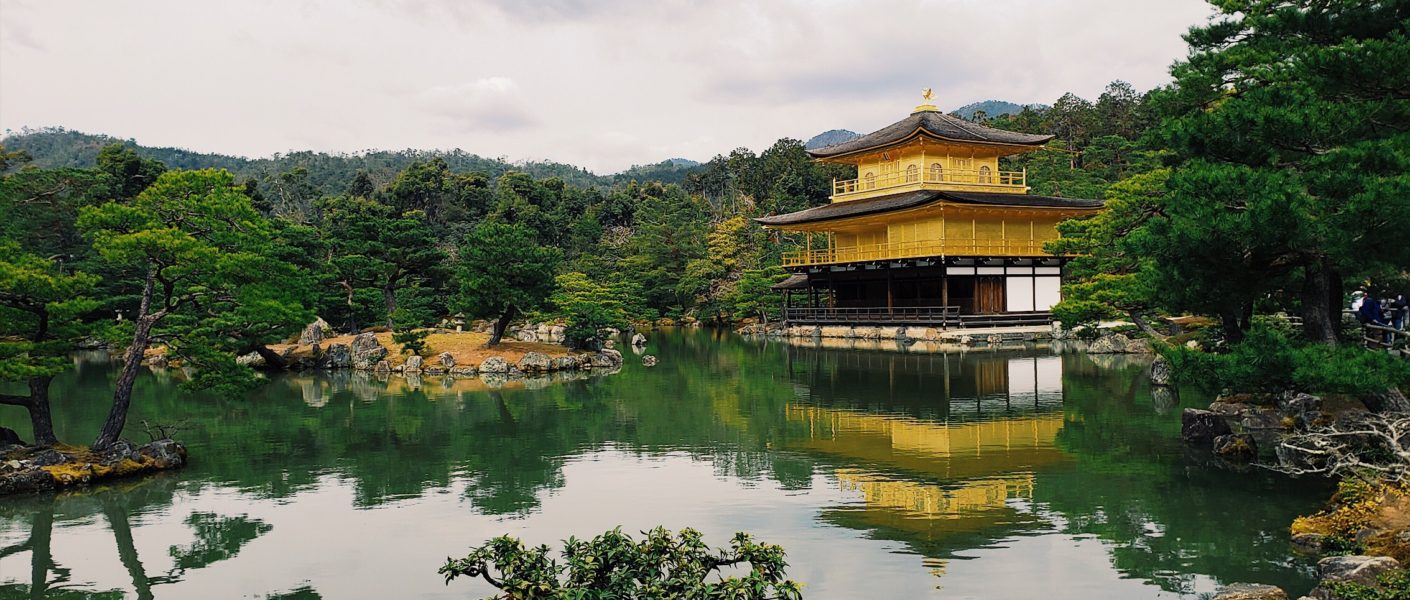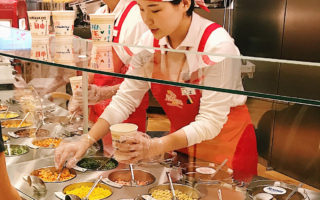Last month my in-laws came to visit and we all took the bullet train down to spend 6 days in Kyoto and Osaka. Our first three days we spent in Kyoto, which used to be the capital of Japan.
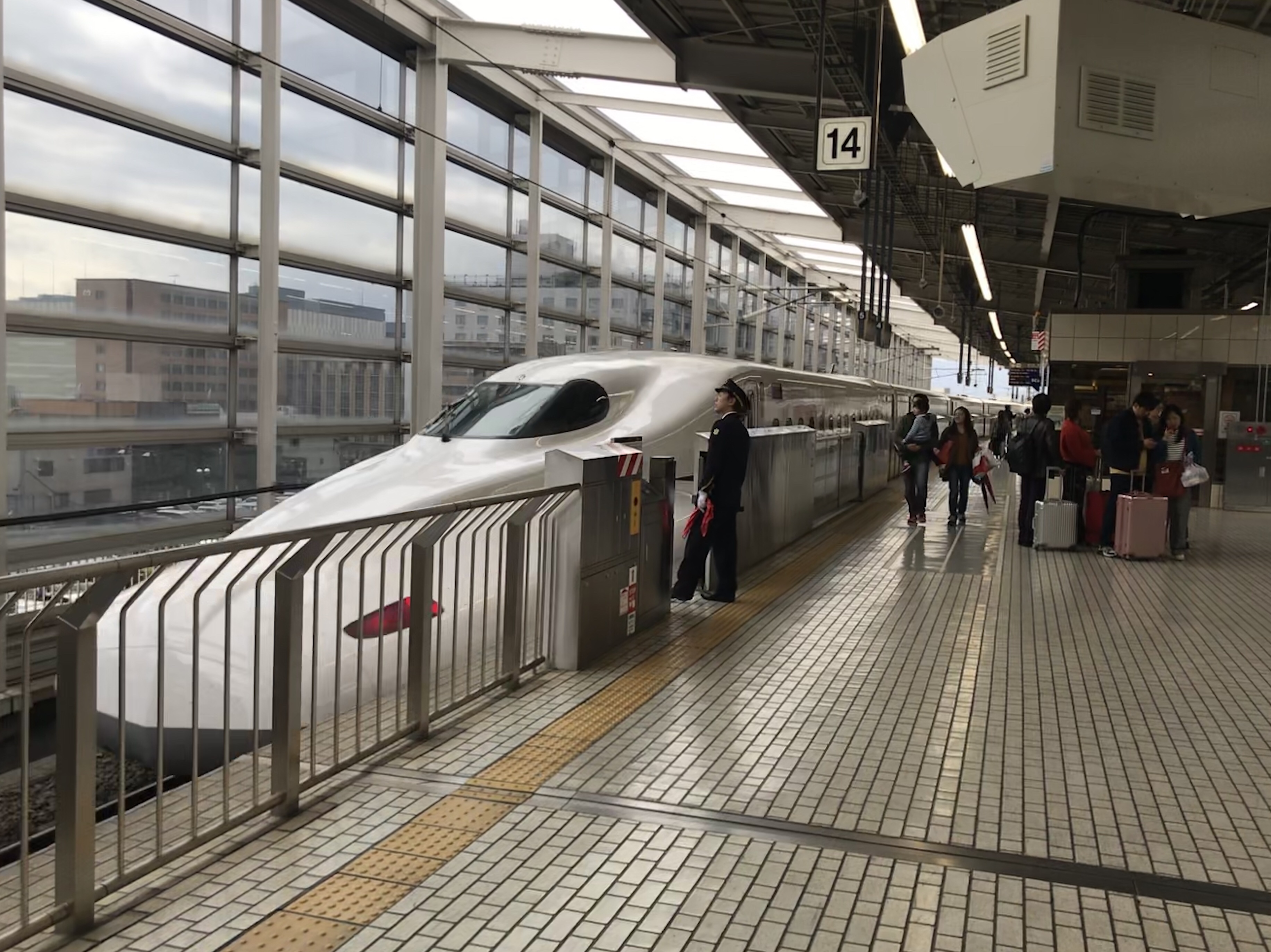
I’ve always heard “If you want to experience the real Japan, spend time in Kyoto instead of Tokyo.” After spending a few days there, it’s easy to see why. The stereotypical scenes you picture when you hear “Japan,” are all in Kyoto. The geishas. The temples. The teahouses. Kyoto all the way.
Kyoto is home to traditional art, architecture and chock full of history. There are hundreds of temples and shrines throughout the city and there are 17 World Heritage Sites here. There was so much for us to see and do and I honestly could’ve spent much longer than three short days here.
We ended up having to go back to our hotel room once a day so that our daughter could nap. We definitely don’t have as much packed into these three days as we could have, but we didn’t to get burnt out on traveling before we got to Osaka.
This itinerary is pretty laid back and relaxed, which is exactly how we liked it. You can definitely squeeze more sightseeing into your time in Kyoto if you have the energy! Here’s how we spent three days in Kyoto.
Day One: Hotel Check-in & Walking through Gion
We arrived in the late afternoon and checked into our hotel right away. We stayed at the Hotel Keihan Grande, right across from Kyoto Station. This made it easy to transport our luggage and gave us easy access to taking the trains around the city.
However, if we go back to Kyoto, I would definitely want to stay in Gion instead. It’s considered to be downtown and there’s lots of activities within walking distance. Our hotel by Kyoto Station was a little far from everything!
Walking through Gion:
Gion is Kyoto’s most famous entertainment district. We went in early evening, and the lanterns lighting up the Edo style buildings created a magical atmosphere. If you stroll through Gion in the evening, you might spot a geisha flitting through a side street to catch her private appointment.
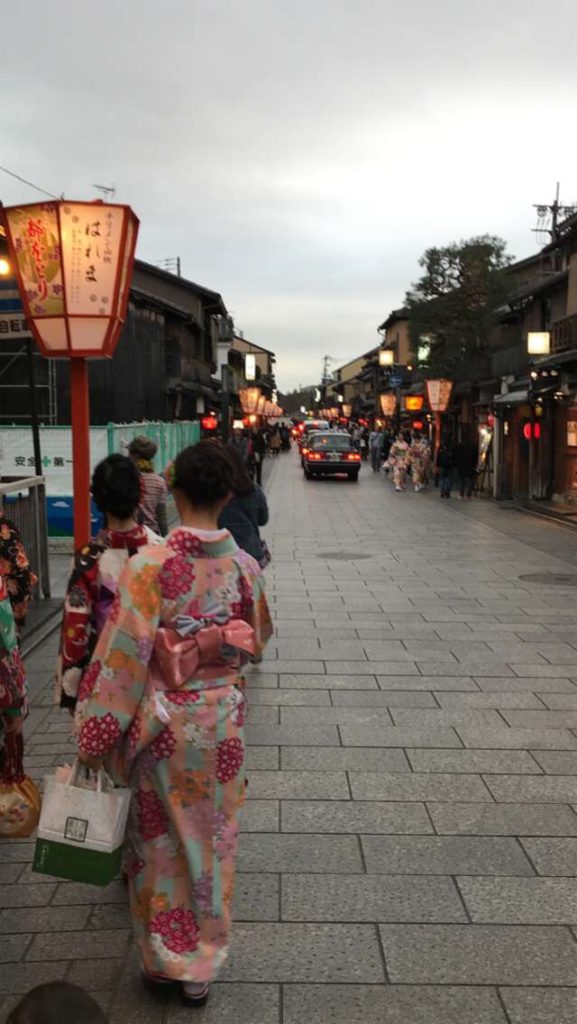
We were lucky enough to catch a quick glimpse of a geisha quietly slipping through a door. Gion has kabuki theaters, traditional teahouses with bamboo blinds and traditional Japanese restaurants where you can sit cross legged on tatami mats for your meal.
We ate dinner at a soba and udon noodle restuarant near Yasaka Shrine. Many restaurants only have bar space or traditional tatami mats to sit on, so it was a relief to find one where we could pull the baby stroller right up to the table.
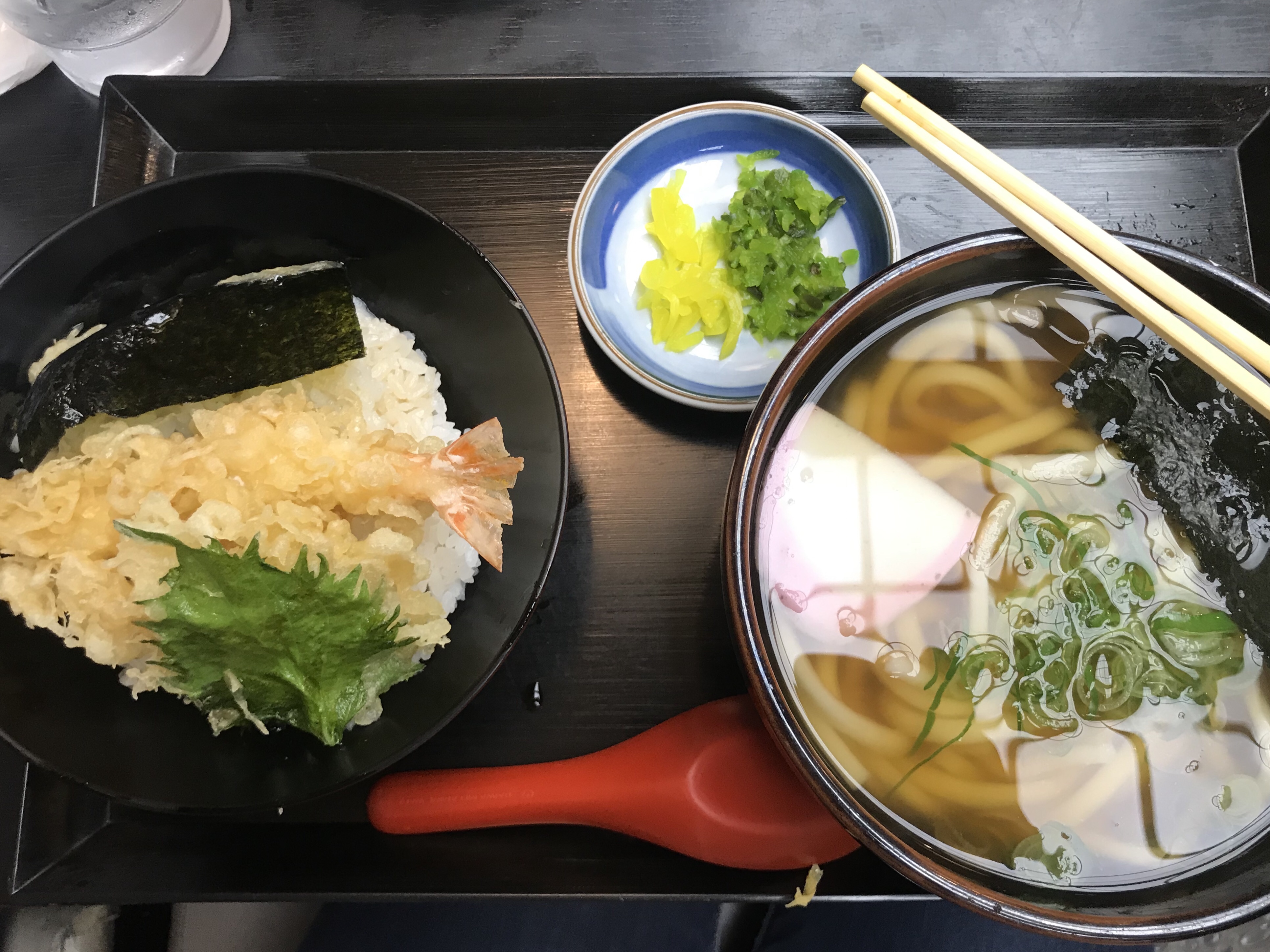
Day Two: Fushimi Inari, Arashiyama Bamboo Forest & Sanjo Bridge
Fushimi Inari Shrine:
While we had all the best intentions of being at Fushimi Inari much earlier than we were, we ended up arriving around 10 AM. It was already packed with throngs of tourists marching up the steps towards the famous red torii gates. This shrine is known worldwide for its thousands of gates which line the path as you ascend the mountain.
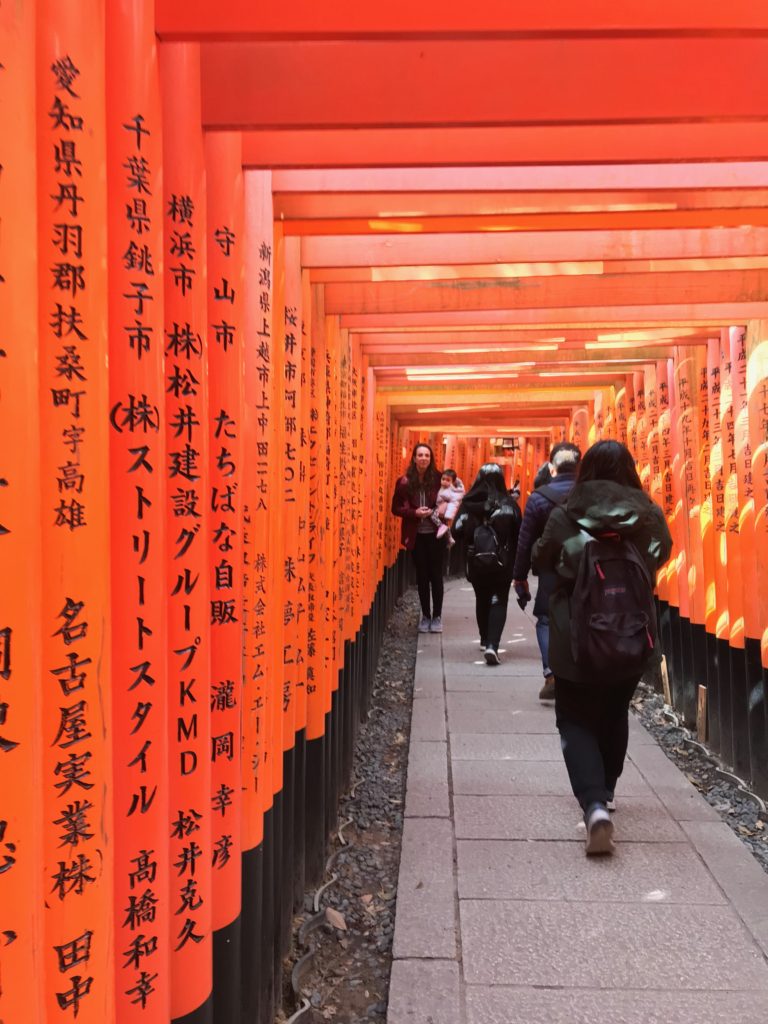
Fushimi Inari enshrines Inari, the god of commerce, business and the rice harvest. It is customary for businesses to donate a torii gate to this shrine to ask for good luck or to thank the gods for good luck they’ve already received. The gates typically cost around 400,000 yen for a small gate all the way up to 1 million yen for a large one (around $3500-$9000).
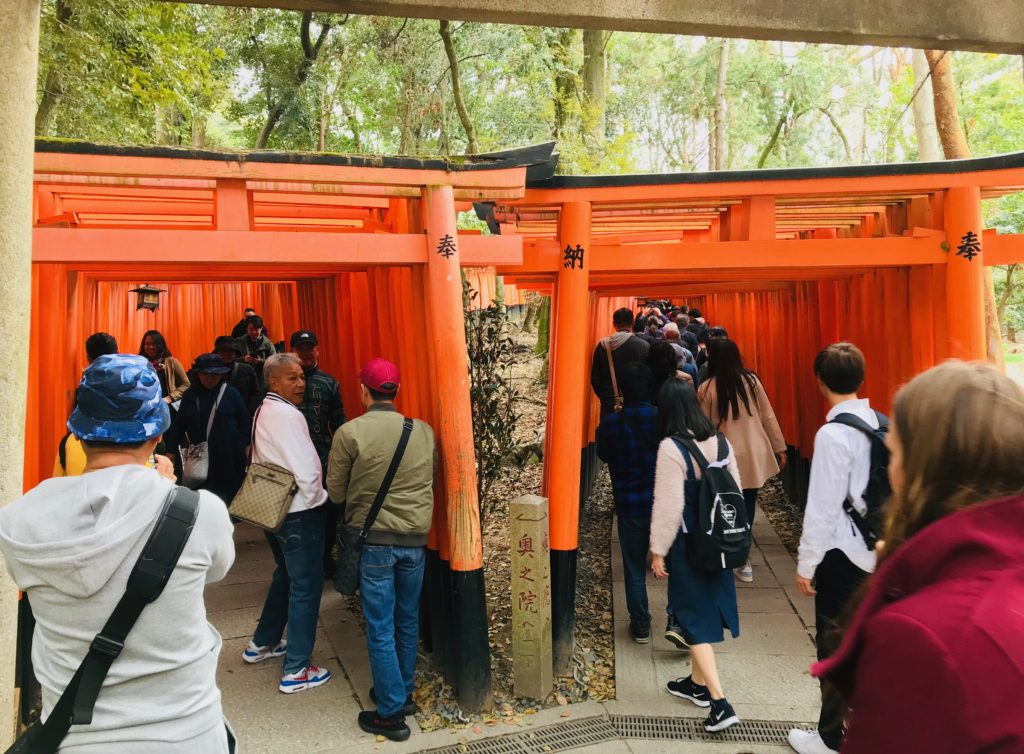
I definitely would recommend trying to come as early as possible if you want to avoid large crowds, but keep in mind that you will also start to leave the crowds behind the farther up you go!
We also enjoyed trying lots of different street food at the base of the mountain when we came back down. It was the perfect lunch!
Arashiyama Bamboo Forest:
After regrouping a bit and a quick nap back at the hotel, we headed over to Arashiyama Bamboo Forest. It was about a 20 minute walk from the station, but definitely a must see when you’re in Kyoto. I wasn’t prepared for the crowds of people present. Okay, I should’ve known by this point. If it’s a top tourist destination for us… it most likely is for everyone else too. But still, I expected a little more peace and quiet than what we encountered.
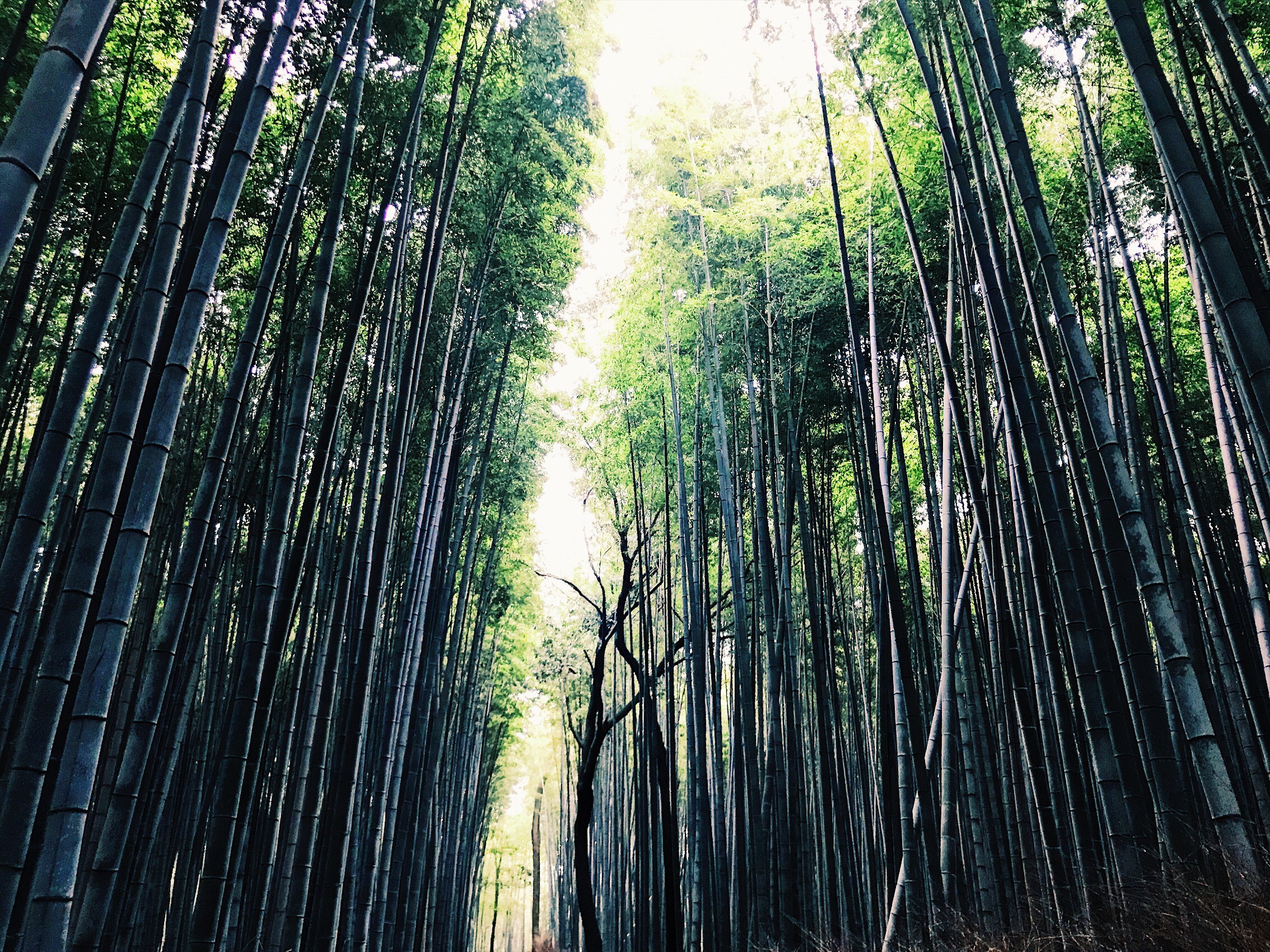
The forest was still stunning amidst the crowds and well worth the trip. We had originally planned to go the Arashiyama Monkey Park as well, since these locations are close together but far from everything else. However, the monkey park closes at 4:30 and we would’ve been cutting it too close.
Sanjo Bridge:
We opted for one of Kyoto’s famous bridges instead, Sanjo Bridge. After crossing over the bridge from the station, we strolled down a street that ran parallel to the river.
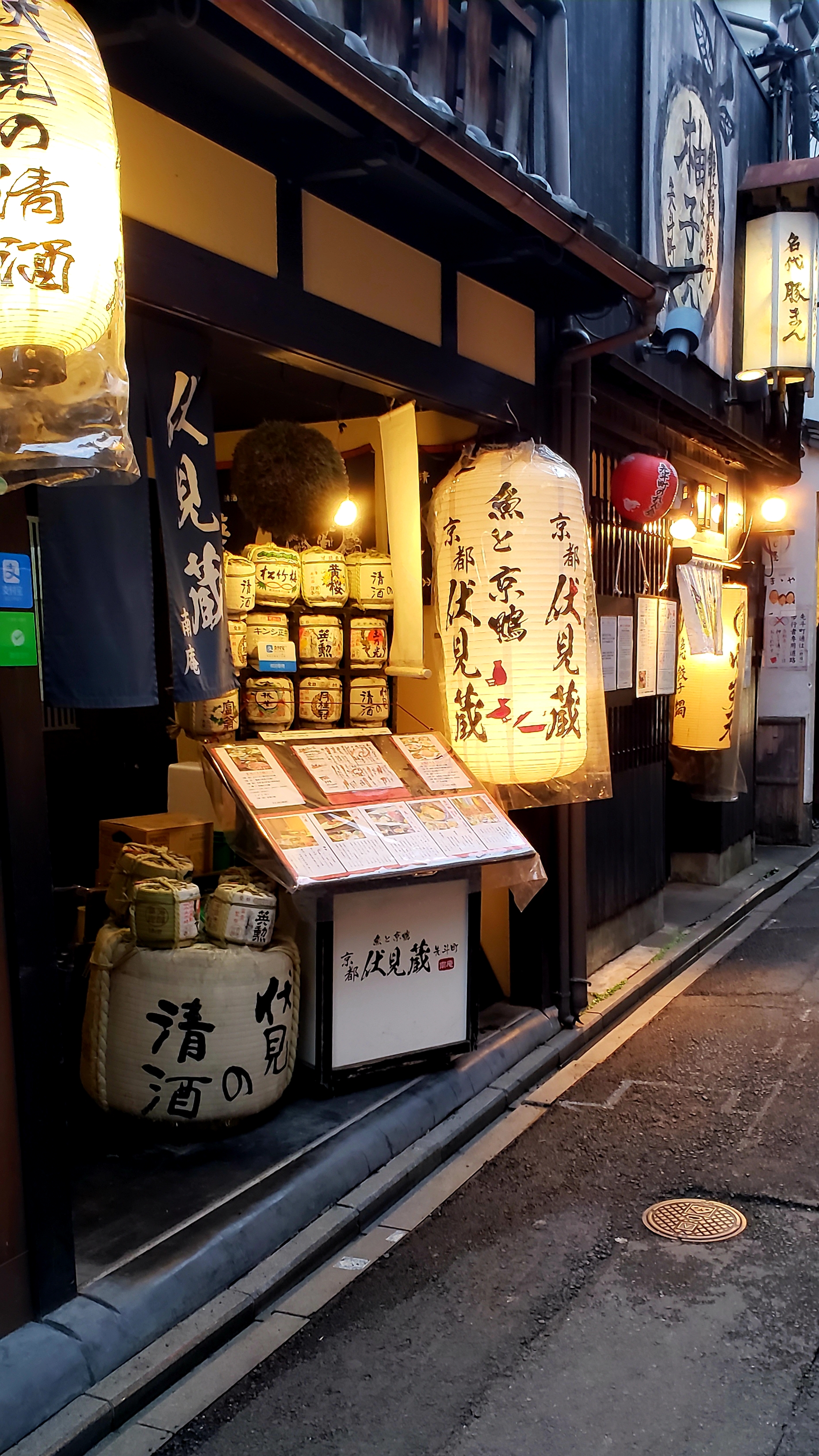
The evening ambiance created by the glowing lanterns, neatly tucked alleyways and strands of music floating from a guitar player was absolutely breathtaking. We had another geisha sighting here!
We closed out our evening getting conveyor belt sushi on the top floor of Takashimaya department store. It was much pricier than our beloved 100 yen Sushiro back home in Tokyo, but it was the perfect meal to close out our day.
Day 3: Kinkakuji Temple and Nishiki Market
Kinkakuji/The Golden Pavilion:
Our final day in Kyoto, we took the bus to Kinkakuji Temple. I definitely recommend getting the 600 yen bus pass for at least one of the days you’re here. You have to take either bus or taxi to get to Kinkakuji anyways, so might as well just pay the flat rate and utilize the bus all day!
The Golden Pavilion is an iconic three story temple, famous for its gold leaf coating on the top two floors. Originally built in 1397, it has been burned down multiple times in its history. Most recently, it was burned to the ground by a mentally ill monk in the 1950s.
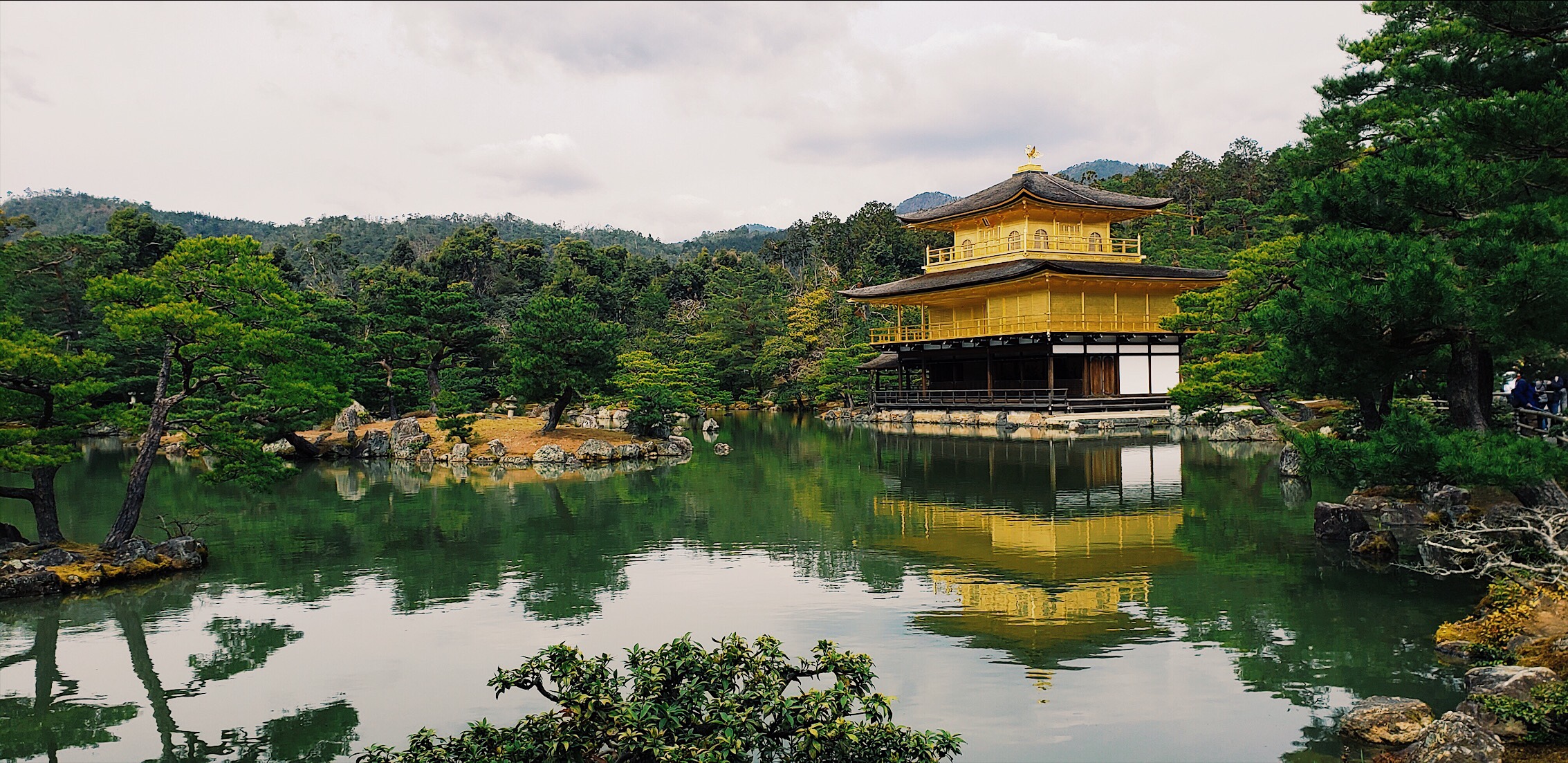
The Zen gardens surrounding the temple are a major attraction to this tourist destination as well, and you can even stop at a traditional teahouse on your way out. Again, I recommend going as early as you can or be prepared to face the crowds!
Kazu “Kyoto Style” Ramen:
We grabbed lunch at Kazu Ramen, which thankfully had a highchair we could use for our daughter and was within walking distance from the Golden Pavilion. It hit the spot on this cold breezy day!
Nishiki Market:
Our last destination in Kyoto was to go to Nishiki Market, known to locals as “Kyoto’s Pantry.” This narrow shopping street is packed with food vendors, specialty shops and souvenir stores.
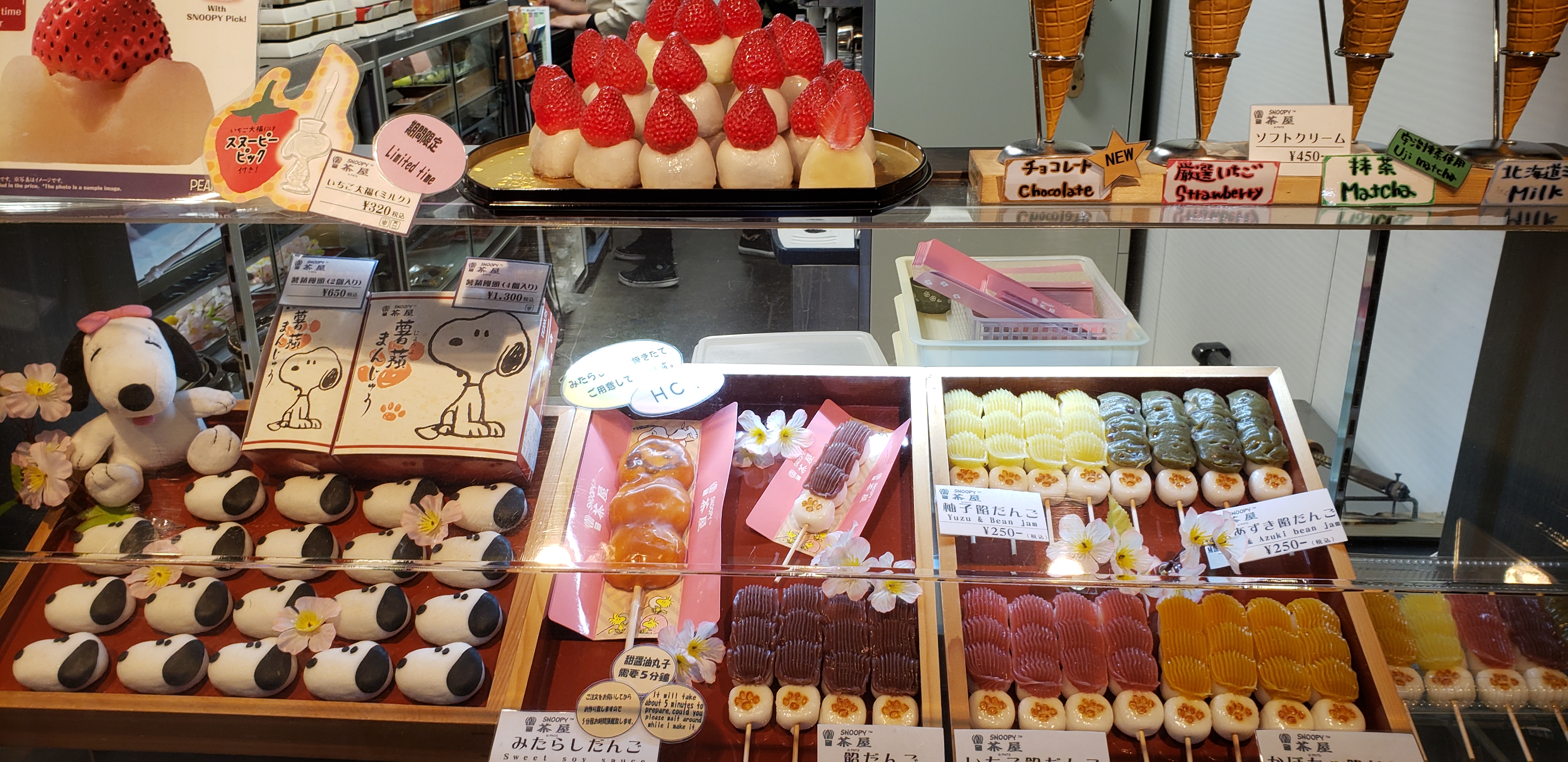
It was absolutely PACKED! It was definitely a mistake to bring the stroller here, and we caused more than a few traffic jams for lack of maneuvering space.
We still managed to eat our fair share of local street food, including strawberry mochi, takoyaki, fresh oysters, grilled scallops and tako-tomago, (octopus on a stick with a quail egg inside the head)! I passed on that last one though. Thanks, but no thanks!
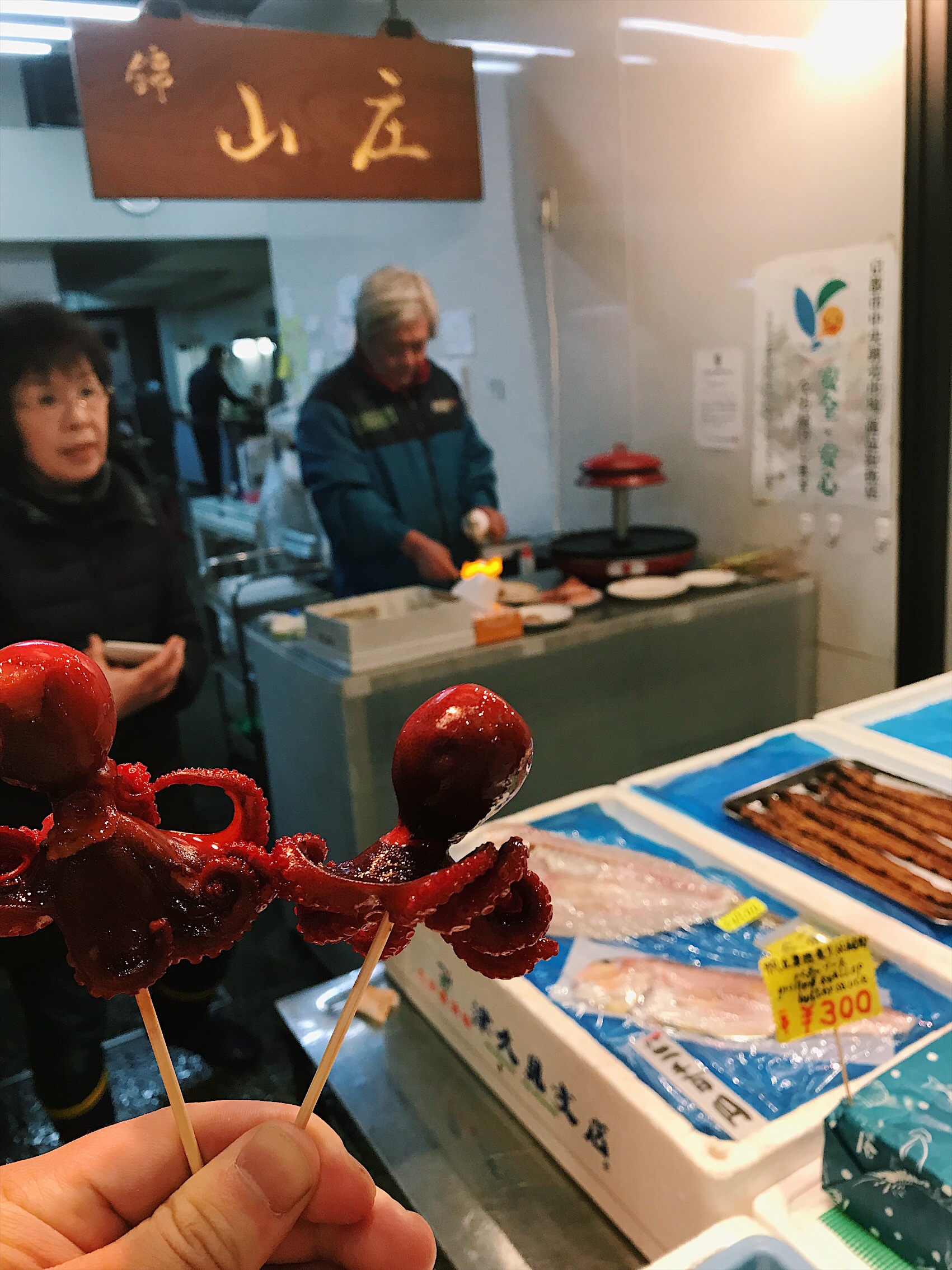
Tips for traveling to Kyoto:
Here are a few key recommendations I have for your trip to Kyoto!
- Stay near Gion, not next to Kyoto Station! You’ll be right in the center of the action.
- Plan to hit the popular tourist destinations as early in the day as possible to avoid crowds.
- If you want to eat traditional Kyoto cuisine, go for lunch instead of dinner! You’ll save a lot of money this way.
- If you have Internet access, Google Maps is your best friend! We used it constantly to navigate both the trains and bus system.
If you’re interested in hearing more about our adventures around Japan, head on over to the travel section of my blog. You can also follow along on Instagram at @adventuresofthecorpuscorps.
We had such a memorable time in Kyoto and I hope you consider these tips and tourist stops when you’re planning your trip there as well!
